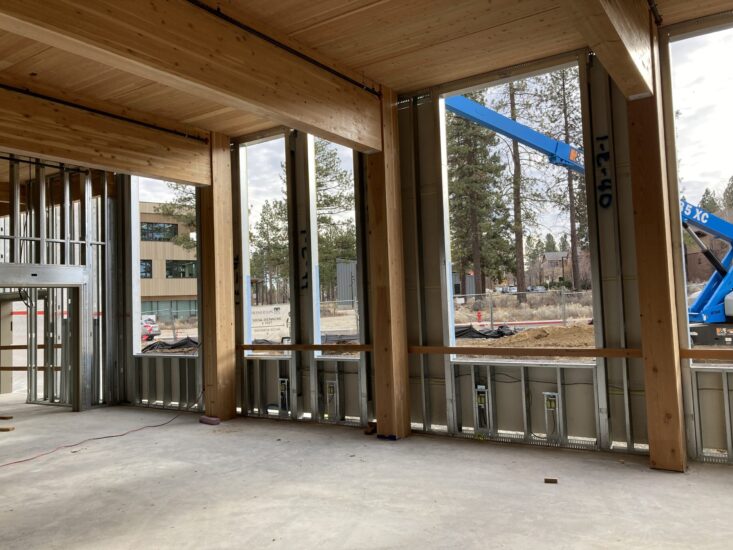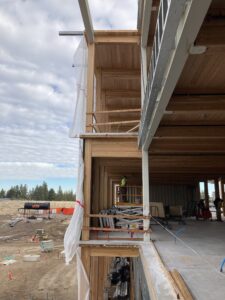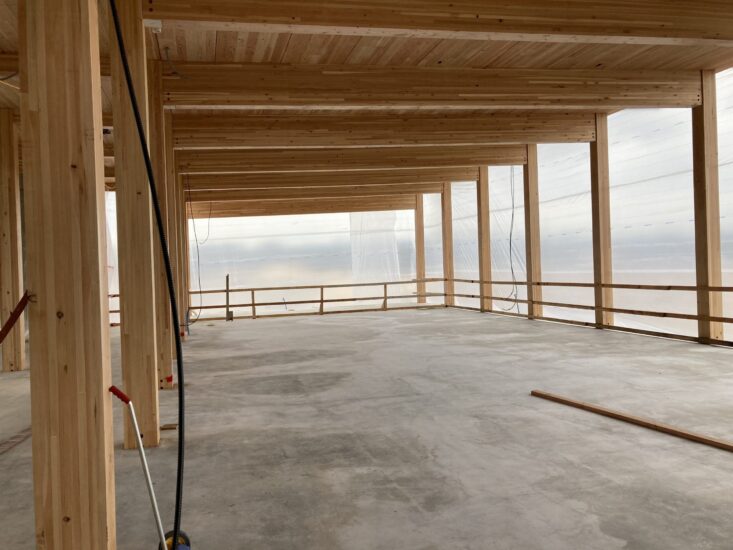Mass Timber: Wood Fiber Volume
May 27, 2021

In our last post on mass timber, we discussed early onboarding of a general contractor and mass timber supplier to ensure cost savings. There are multiple ways to save money on a mass timber project, which brings us to our next mass timber topic: limiting the thickness of the timber. The key for an efficient mass timber building is to reduce the amount of wood fiber in the structure.

The element of an all-mass timber structure that contributes the most to the amount of wood fiber is the horizontal floor plate, typically cross-laminated timber (CLT) or mass ply panels (MPP). On Oregon State University Cascades Edward J. Ray Hall, we worked with SRG Partnership to find a column and beam spacing that worked within the building programming (classrooms and labs) to minimize the thickness of the floor plate, which was CLT. We ran several studies with different column and beam spacings to determine the impacts on wood fiber and programming, and we ultimately landed on a 10-foot on-center spacing. This created the least amount of wood fiber because it allowed the use of a 3-ply CLT panel.
Another item to consider when picking a beam and column spacing is how the spacing works with the panel lengths. Most mass timber suppliers fabricate a 40-foot-long panel, so it is often most efficient to land on a beam spacing that is a multiple of 40 feet (for example, 10 feet on-center or 13 feet, 4 inches on-center work nicely). By matching the beam spacing to the panel lengths you reduce labor in the field by creating less pieces for them to lift and less panel waste at the factory.
In addition to working within a building’s programming requirements, a building’s Construction Type can influence panel thickness. For example, if we are reliant upon char to provide a fire rating to achieve a system compliant with the Construction Type, that may force us to use a thicker panel to ensure there is sufficient reserve structural stability following that fire event. For Edward J. Ray Hall, the structure could remain unrated since its size allowed for sprinklers to provide for 100% of the fire protection. This allowed us to explore 3-ply CLT panels in earnest where thicker 5-ply panels may otherwise have been warranted.











